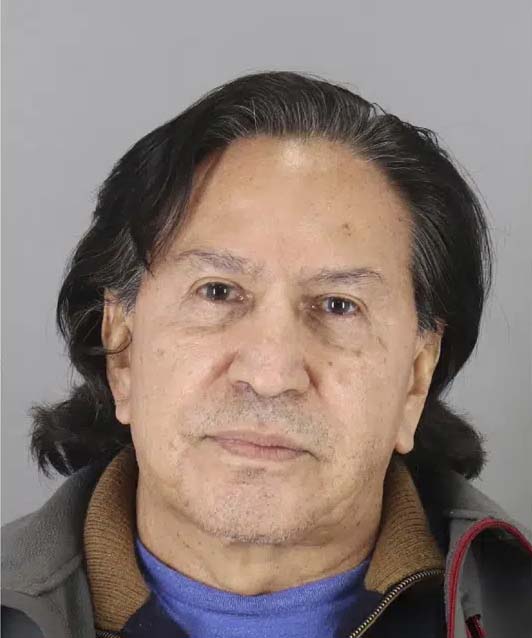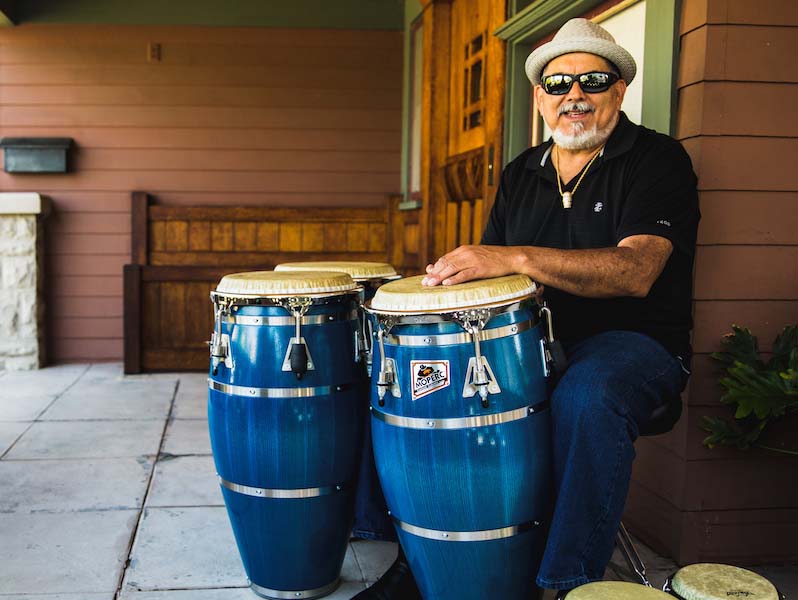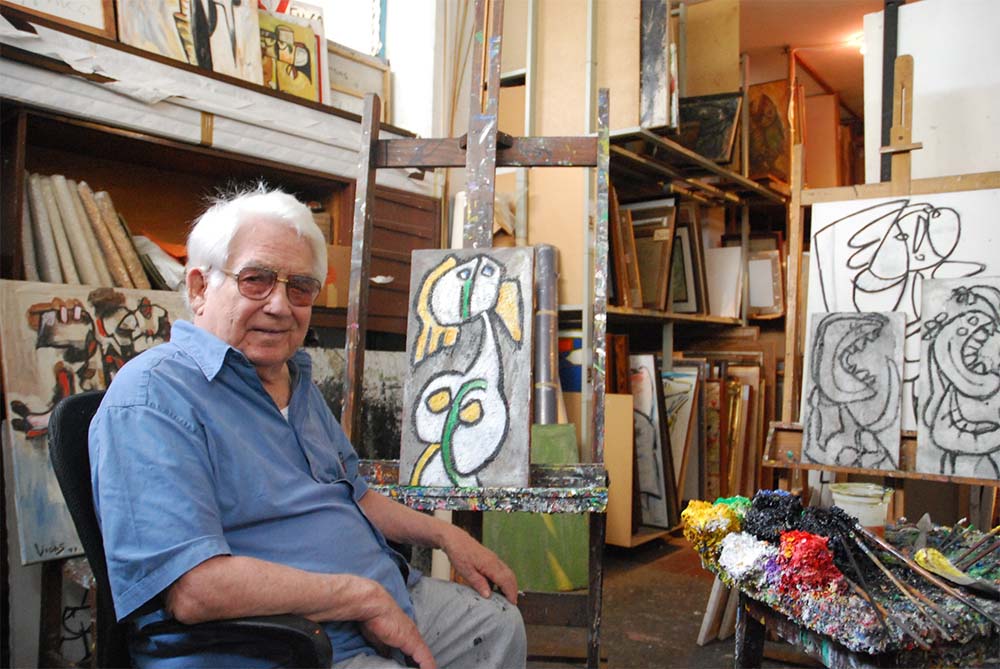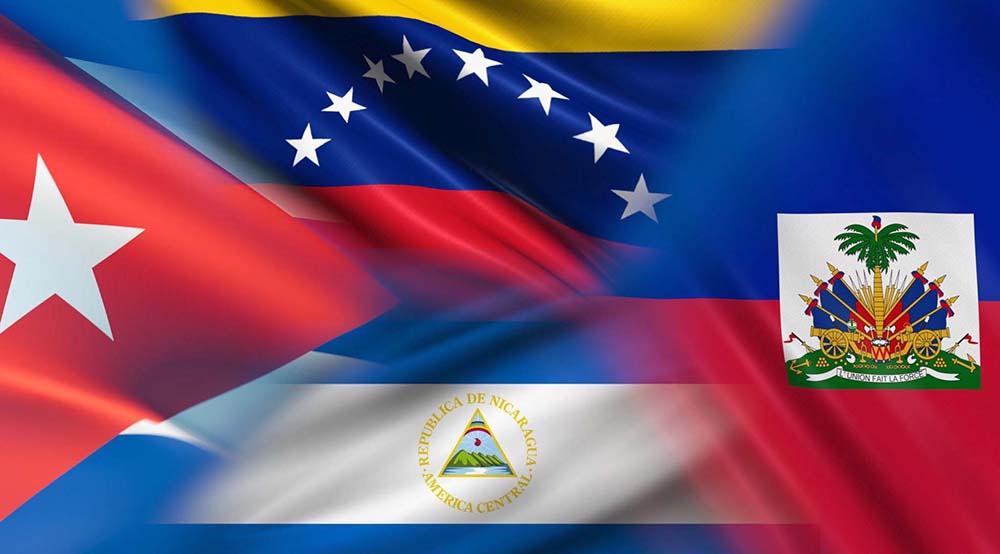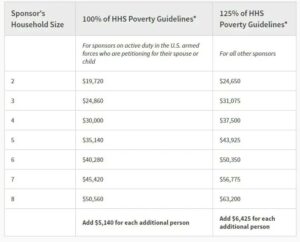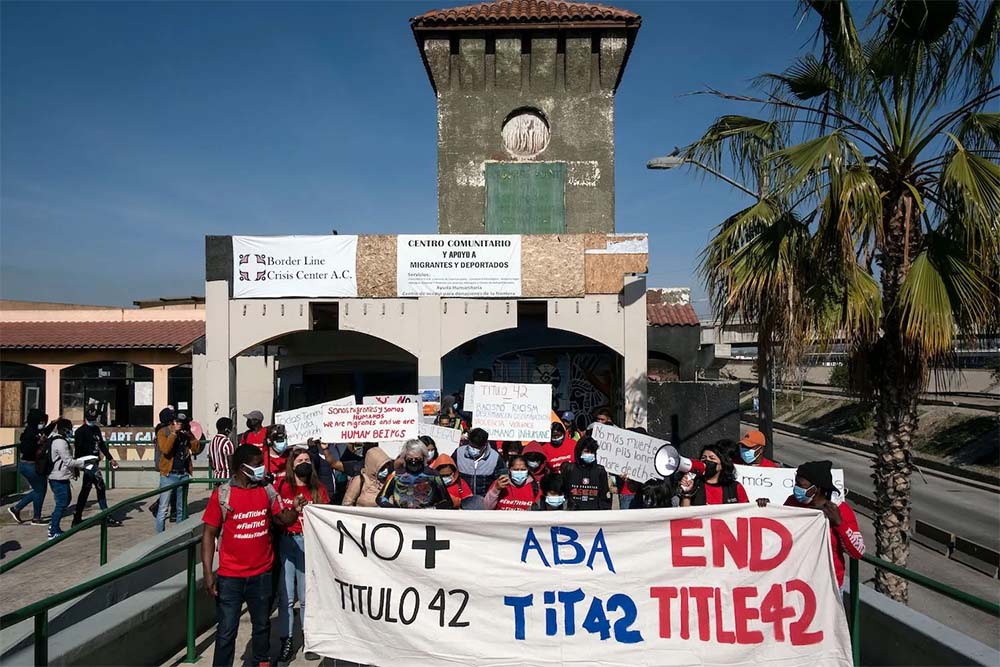“At what point does a beleaguered population living near or below the poverty line rise up in protest?” From the author’s talk on April 4 at the Independent National Convention in Austin, Texas
by Chris Hedges
Original to ScheerPost
April 5, 2023 – The United States is undergoing the most vicious class war in its history. Social inequality has reached its most extreme levels of disparity in over 200 years, surpassing the rapacious greed of the era of the robber barons.
The legislative, executive and judicial branches of government, along with the media and universities, have been seized by a tiny cabal of billionaires and corporations who pass laws and legislation that consolidate their power and obscene wealth at the peoples’ expense.
Americans are sacrificial victims, whether on the left or the right, helpless before this modern incarnation of the Biblical idol Moloch.
In 1928, the top 1 percent held about 24 percent of the nation’s income, a percentage that steadily declined until 1973. By the early 1970s the oligarchy’s assault against workers was accelerated in response to the rise of popular mass movements in the 1960s.
The billionaire class and corporations poured billions into political parties, academia, think-tanks and the media. Critics of capitalism had difficulty finding a platform, including on public broadcasting.
Those who sang to the tune the billionaires played were lavished with grants, book deals, tenured professorships, awards and permanent megaphones in the commercial press. Wages stagnated. Income inequality grew to monstrous proportions. Tax rates for corporations and the rich were slashed until it culminated in a virtual tax boycott.
Today, the top 10 percent of the richest people in the United States own almost 70 percent of the country’s total wealth. The top 1 percent control 32 percent of the wealth. The bottom 50 percent of the U.S. population hold 3 percent of all U.S. wealth.
These ruling oligarchs have Americans, not to mention the natural world, in a death grip. They have mobilized the organs of state security, militarized the police, built the largest prison system in the world and deformed the courts to criminalize poverty.
Americans are the most spied upon, watched, photographed and monitored population in human history, and I covered the Stasi state in East Germany. When the corporate state watches you 24-hours a day you cannot use the word liberty. This is the relationship between a master and a slave.
“These ruling oligarchs have Americans, not to mention the natural world, in a death grip.”
The oligarchs have bought off intellectuals and artists to serve commercial interests.
The machinery of corporate dominance is carried out by the college-educated, those who rise to the top of academia — such as the economist Larry Summers who pushed the deregulation of Wall Street under President Bill Clinton, or the political scientist Samuel Huntington who warned that countries like the U.S. and U.K. were suffering from an “excess of democracy” — those who manage the financial firms and corporate superstructures, those who provide the jingles, advertising, brands and political propaganda in public relations firms, and those in the press who work as stenographers to power and those in the entertainment industry who fill our heads with fantasies.
Creating Pariahs
It is one of the great ironies that the corporate state needs the abilities of the educated, intellectuals and artists to maintain power, yet the moment any begin to think independently they are silenced.
“These ruling oligarchs have Americans, not to mention the natural world, in a death grip.”
The oligarchs have bought off intellectuals and artists to serve commercial interests.
The machinery of corporate dominance is carried out by the college-educated, those who rise to the top of academia — such as the economist Larry Summers who pushed the deregulation of Wall Street under President Bill Clinton, or the political scientist Samuel Huntington who warned that countries like the U.S. and U.K. were suffering from an “excess of democracy” — those who manage the financial firms and corporate superstructures, those who provide the jingles, advertising, brands and political propaganda in public relations firms, and those in the press who work as stenographers to power and those in the entertainment industry who fill our heads with fantasies.
Creating Pariahs
It is one of the great ironies that the corporate state needs the abilities of the educated, intellectuals and artists to maintain power, yet the moment any begin to think independently they are silenced.
The relentless assault on culture, journalism, education, the arts and critical thinking has left those who speak in the language of class warfare marginalized, frantic Cassandras who are viewed as slightly unhinged and depressingly apocalyptic. Those with the courage to shine a light into the inner workings of the machinery, such as Noam Chomsky, are turned into pariahs, or, like Julian Assange, relentlessly persecuted.
Culture is vital to democracy. It is radical and transformative. It expresses what lies deep within us. It gives words to our reality. It validates the facts of our lives. It makes us feel as well as see. It allows us to empathize with those who are different or oppressed. It reveals what is happening around us. It honors mystery.
“The precise role of the artist, then, is to illuminate that darkness, blaze roads through the vast forest,” James Baldwin writes, “so that we will not, in all our doing, lose sight of its purpose, which is, after all, to make the world a more human dwelling place.”
“Ultimately, the artist and the revolutionary function as they function, and pay whatever dues they must pay behind it because they are both possessed by a vision, and they do not so much follow this vision as find themselves driven by it,” writes Baldwin.
The central premise of mass culture is that capitalism is the unassailable engine of human progress, even as global capitalists have pumped nearly 37 percent more greenhouse gas emissions into the atmosphere since the first Convention on Climate Change in 1992.
Speak of values and needs, speak of moral systems and meaning, defy the primacy of profit, especially if you only have the few minutes allotted to you on a cable television show to communicate back-and-forth in the usual thought-terminating cliches, and it sounds like gibberish to a conditioned public .
Capitalism, as Karl Marx understood, is a revolutionary force. It is endemically unstable. It exploits human beings and the natural world until exhaustion or collapse. That is its nature.
But those in society tasked with revealing this nature have been bought off or silenced. Truth is not derived from social values or ethics external to corporate culture. Social, familial and individual rights and needs, as well as the ability to focus on these rights and needs, are robbed from the population.
“Capitalism, as Karl Marx understood, is a revolutionary force. It is endemically unstable.”
There are their facts and there are our facts. Markets, economic growth, higher corporate profits and consolidations, austerity, technological innovation, deindustrialization and a climbing stock market are their facts. Janet Yellen’s need to orchestrate unemployment to bring down inflation is, for them, a vital fact.
Our facts, the facts of those who are evicted, go to prison, are unemployed, are sick yet uninsured, the 12 million children who go to bed hungry, or live, like nearly 600,000 Americans, on the streets, are not part of the equation.
Our facts do not attract advertisers. Our facts do not fit with the Disneyfied world the media and advertisers are paid to create. Our facts are an impediment to increased profits.
Living the Dream
One strives towards a dream. One lives within an illusion. And the illusion that people are fed is that there is never an impediment which can’t be overcome. That if we just dig deep enough within ourselves, if we find our inner strength, if we grasp as self-help gurus tell us that we are truly exceptional, if we believe that Jesus can perform miracles, if we focus on happiness, we can have everything we desire.
And when we fail, as most fail in a post-industrial United States to fulfill this illusion, we are told we didn’t try hard enough.
Sigmund Freud wrote that societies, along with individuals, are driven by two primary instincts. One is the instinct for life — Eros, the quest to love, nurture, protect and preserve. The second is the death instinct.
The death instinct, called Thanatos by post-Freudians, is driven by fear, hatred and violence. It seeks the dissolution of all living things, including ourselves. One of these two forces, Freud writes, is always ascendant.
Societies in decline are seduced by the death instinct, as Freud observes in Civilization and Its Discontents, written during the rise of European fascism and World War II. The death instinct sees destruction as creation.
The satisfaction of the death instinct, Freud writes, “is accompanied by an extraordinarily high degree of narcissistic enjoyment, owing to its presenting the ego with a fulfillment of the latter’s old wishes for omnipotence.”
A population beset by despair, a sense of dethronement and powerlessness, is intoxicated by an orgy of annihilation, which soon morphs into self-annihilation. It has no interest in nurturing a world that has betrayed them.
It seeks to eradicate this world and replace it with a mythical one. It retreats into self-adulation fed by self-delusion and historical amnesia.
The danger of illusion is that it allows you to remain in a state of infantilism. As the gap opens between the illusion of who Americans think they are and the reality of the inequality, the violence, the foreclosures, the bankruptcies that are caused by the inability to pay medical bills and ultimately the collapse of empire, people are unprepared emotionally, psychologically and intellectually for what confronts them.
When the wolf is at the door, when our house is foreclosed, when unemployment insurance runs out, one reacts as a child reacts. There is a search for a demagogue or a savior who promises protection, moral renewal, vengeance and new glory.
“The danger of illusion is that it allows you to remain in a state of infantilism.”
This is the deformed world the corporate masters have created. It is one that Americans must confront and dismantle. It requires the pitting of power against power.
It requires the dismantling of the illusions used to disempower us, to adhere to values based on the sanctity of life, rather than the fact of profit.
It requires the crossing of cultural and political divides that the ruling class has erected and the building of new political and social coalitions.
The Empty Politics of Diversity
The politics of diversity have become advertising gimmicks, brands. Former U.S. President Barack Obama did nothing to blunt social inequality and imperial folly. Identity politics and diversity busy liberals and the educated with a boutique activism at the expense of addressing systemic injustices or the scourge of permanent war.
The haves scold the have-nots for their bad manners, racism, linguistic insensitivity and garishness, while ignoring the root causes of their economic distress or the suicidal despair gripping much of the country.
Did the lives of Native Americans improve because of the legislation mandating assimilation and the revoking of tribal land titles pushed through by Charles Curtis, the first Native American vice president?
“Identity politics and diversity busy liberals and the educated with a boutique activism at the expense of addressing systemic injustices or the scourge of permanent war.”
Are we better off with Clarence Thomas, who opposes affirmative action, on the Supreme Court? Or Victoria Nuland, a war hawk, in the State Department?
Is the U.S. perpetuation of permanent war more palatable because Lloyd Austin, an African-American, is the secretary of defense? Is the military more humane because it accepts transgender soldiers?
Is social inequality, and the surveillance state that controls it, ameliorated because Sundar Pichai, who was born in India, is the CEO of Google and Alphabet? Has the weapons industry improved because Kathy J. Warden, a woman, is the CEO of Northop Grumman? And another woman, Phebe Novakovic, is the CEO of General Dynamics?
Are working families better off with Janet Yellen, who promotes increasing unemployment and “job insecurity” to lower inflation, as secretary of the treasury? Is the movie industry enhanced when a female director, Kathryn Bigelow, makes “Zero Dark Thirty,” agitprop for the C.I.A.?
Richard Rorty in his last book Achieving Our Country saw where we Americans are headed. He writes:
“[M]embers of labor unions, and unorganized unskilled workers, will sooner or later realize that their government is not even trying to prevent wages from sinking or to prevent jobs from being exported. Around the same time, they will realize that suburban white-collar workers — themselves desperately afraid of being downsized — are not going to let themselves be taxed to provide social benefits for anyone else.
At that point, something will crack. The nonsuburban electorate will decide that the system has failed and start looking around for a strongman to vote for — someone willing to assure them that, once he is elected, the smug bureaucrats, tricky lawyers, overpaid bond salesmen, and postmodernist professors will no longer be calling the shots. A scenario like that of Sinclair Lewis’ novel It Can’t Happen Here may then be played out. For once a strongman takes office, nobody can predict what will happen. In 1932, most of the predictions made about what would happen if Hindenburg named Hitler’s chancellor were wildly overoptimistic.
One thing that is very likely to happen is that the gains made in the past forty years by black and brown Americans, and by homosexuals, will be wiped out. Jocular contempt for women will come back into fashion. The words [slur for an African-American that begins with “n”] and [slur for a Jewish person that begins with “k”] will once again be heard in the workplace. All the sadism which the academic Left has tried to make unacceptable to its students will come flooding back. All the resentment which badly educated Americans feel about having their manners dictated to them by college graduates will find an outlet.”
The public has been siloed into antagonistic tribes. Catering to these antagonistic tribes is the business model of the media, whether Fox News or MSNBC.
Not only are these competing demographics fed what they want to hear, but the opposing tribe is demonized, with the scalding rhetoric widening the chasms within the public. This delights the oligarchs.
If we are to wrest power back from corporations and the billionaire class who have carried out this coup d’état in slow motion, as well as prevent the rise of neofascism, we must build a left-right coalition free from the moral absolutism of woke zealots.
We must organize to use the one weapon workers possess that can cripple and destroy the billionaire class’s economic and political power. The strike.
The oligarchs have spent decades abolishing or domesticating unions, turning the few unions that remain, into obsequious junior partners in the capitalist system.
Only 10.1 percent of the workforce is unionized. As of January 2022, private-sector unionization stood at its lowest point since the passage of the National Labor Relations Act of 1935.
And yet, 71 percent of U.S. workers say they would like to belong to a union, the highest in nearly six decades, and up from 48 percent in 2009, according to a Gallup poll conducted last summer.
Attacks on Workers’ Power
A series of anti-labor laws, including the 1947 Taft-Hartley Act and so called Right-to-Work laws, which outlaw union shops, were crafted to weaken workers bargaining power and stymie the ability to strike.
When the Taft-Hartley Act was passed, about a third of the workforce was unionized, peaking in 1954 at 34.8 percent. The Act is a frontal assault on unions. It prohibits jurisdictional strikes, wildcat strikes, solidarity or political strikes and secondary boycotts, whereby unions strike against employers who continue to do business with a firm that is undergoing a strike. It forbids secondary or common situs picketing and closed shops.
Companies are permitted under the Act to require employees to attend anti-union propaganda meetings, which Amazon does with its workers.
The federal government is empowered to obtain strikebreaking injunctions and impose a deal on workers if an impending or current strike imperils “national health or safety,” as the Biden administration did with the freight railway workers. The right to strike in the U.S. barely exists.
The strike is the only weapon workers have to hold power in check. Third parties can run candidates to challenge the duopoly, but they are useless appendages unless they have the power of organized labor behind them.
As history has repeatedly proven, organized labor, allied with a political party dedicated to its interests, is the only way people can protect themselves from the oligarchs.
Nick French, in an article in Jacobin, draws on the work of the sociologist Walter Korpi, who examined the rise of the Swedish welfare state in his book The Democratic Class Struggle. Korpi detailed how Swedish workers,
“built a strong and well-organized trade union movement, organized along industrial lines and united by a central trade union federation…. which worked closely with the Social Democratic Workers’ Party of Sweden (SAP).”
The battle to build the welfare state required organizing — 76 percent of workers were unionized — waves of strikes, militant labor activity and political pressure from the SAP.
“Measured in terms of the number of working days per worker,” Korpi writes, “from the turn of the century up to the early 1930s, Sweden had the highest level of strikes and lockouts among the Western nations.”
From 1900 to 1913, “there were 1,286 days of idleness due to strikes and lockouts per thousand workers in Sweden. From 1919–38, there were 1,448. By comparison, in the United States last year, according to National Bureau of Economic Research data, there were fewer than 3.7 days of idleness per thousand workers due to work stoppages.”
At what point does a beleaguered population living near or below the poverty line rise up in protest?
At what point will it engage in sustained civil resistance to break the stranglehold of the power elite?
At what point will people be willing to accept the risk of arrest, prison or worse?
This, if history is any guide, is unknown. But that the tinder is there is now undeniable, even to the ruling class. As the American philosopher Richard Rorty warned, if these divisions are allowed to expand, the risk rises of allowing Christian fascists to snuff out what is left of an anemic republic.
But if Americans organize around common concerns, including the death sentence handed to billions of the global population by the fossil fuel industry, the focus can be diverted from the demonized other to the real enemy — the corporate masters.
“As history has repeatedly proven, organized labor, allied with a political party dedicated to its interests, is the only way people can protect themselves from the oligarchs.”
France is giving us a powerful lesson in how to pit popular power against a ruling elite.
The attempt by French President Emmanuel Macron to unilaterally raise the age for retirement has triggered massive strikes and protests across France, including in Paris, Lyon, Marseille and Bordeaux. Some 3.5 million workers were out in France last week during their ninth rolling strike.
Prime Minister Benjamin Netanyahu’s attempt to gut judicial oversight was put on hold when the country’s largest trade union umbrella group organized strikes shutting down transportation, universities, restaurants and retailers.
Americans’ own history of militant labor activity, especially in the 1930s, resulted in a series of measures that protected working men and women across the U.S., including Social Security, the eight-hour work day and the end to child labor.
The United States had the bloodiest labor wars of any industrialized nation — rivaled only by the eradication of organized labor by fascist regimes in Europe.
Hundreds of U.S. workers were killed. Thousands were wounded. Tens of thousands were blacklisted. Radical union organizers such as Joe Hill were executed on trumped-up murder charges, imprisoned like Eugene V. Debs, or driven, like “Big Bill” Haywood, into exile.
Militant unions were outlawed. During the Palmer Raids carried out on the second anniversary of the Russian Revolution, on Nov. 17, 1919, more than 10,000 alleged communists, socialists and anarchists were arrested. Many were held for long periods without trial.
Thousands of foreign-born emigrés, such as Emma Goldman, Alexander Berkman and Mollie Steimer were arrested, imprisoned and ultimately deported. Socialist publications, such as Appeal to Reason and The Masses, were shut down.
The Great Railway Strike of 1922 saw company gun thugs open fire, killing strikers. Pennsylvania Railroad president, Samuel Rea, alone hired over 16,000 gunmen to break the strike of nearly 20,000 employees at the company’s shops in Altoona, Pennsylvania, the largest in the world.
The railroads mounted a massive press campaign to demonize the strikers. They hired thousands of scabs, many of whom were African-American workers who were barred by union management from membership. The Supreme Court upheld “yellow dog” contracts that forbade workers from unionizing.
The establishment press, along with the Democratic Party, were full partners in the demonization and defanging of labor. The same year also saw unprecedented railway strikes in Germany and India.
To prevent railroad strikes, which disrupted nationwide commerce in 1877, 1894 and 1922 the federal government passed The Railway Labor Act in 1926 — union members call it “The Railway Anti-Labor Act” — setting out numerous requirements, including the appointment of a Presidential Emergency Board before a strike could be called.
Biden set up a Presidential Emergency Board in July of last year. One month later, freight railway workers were forced to accept a contract that excluded any paid sick leave.
Today’s oligarchs are as vicious and tight-fisted as those of the past. They will fight with everything at their disposal to crush the aspirations of workers and the demand for democratic reforms. It will not be a quick or an easy battle.
But if Americans focus on the oppressor, rather than demonizing those who are also oppressed, if they do the hard work of building mass movements to keep the powerful in check, if they accept that civil disobedience has a cost, including jail time, if they are willing to use the most powerful weapon we have – the strike – Americans can reclaim their country.
— Chris Hedges is a Pulitzer Prize–winning journalist who was a foreign correspondent for 15 years for The New York Times, where he served as the Middle East bureau chief and Balkan bureau chief for the paper. He previously worked overseas for The Dallas Morning News, The Christian Science Monitor and NPR. He is the host of show “The Chris Hedges Report.”
Author’s Note to Readers: There is now no way left for me to continue to write a weekly column for ScheerPost and produce my weekly television show without your help. The walls are closing in, with startling rapidity, on independent journalism, with the elites, including the Democratic Party elites, clamoring for more and more censorship. Bob Scheer, who runs ScheerPost on a shoestring budget, and I will not waiver in our commitment to independent and honest journalism, and we will never put ScheerPost behind a paywall, charge a subscription for it, sell your data or accept advertising. Please, if you can, sign up at chrishedges.substack.com so I can continue to post my Monday column on ScheerPost and produce my weekly television show, “The Chris Hedges Report.”
This column is from Scheerpost, for which Chris Hedges writes a regular column. Click here to sign up for email alerts.
The views expressed are solely those of the author and may or may not reflect those of Consortium News and El Reportero.


